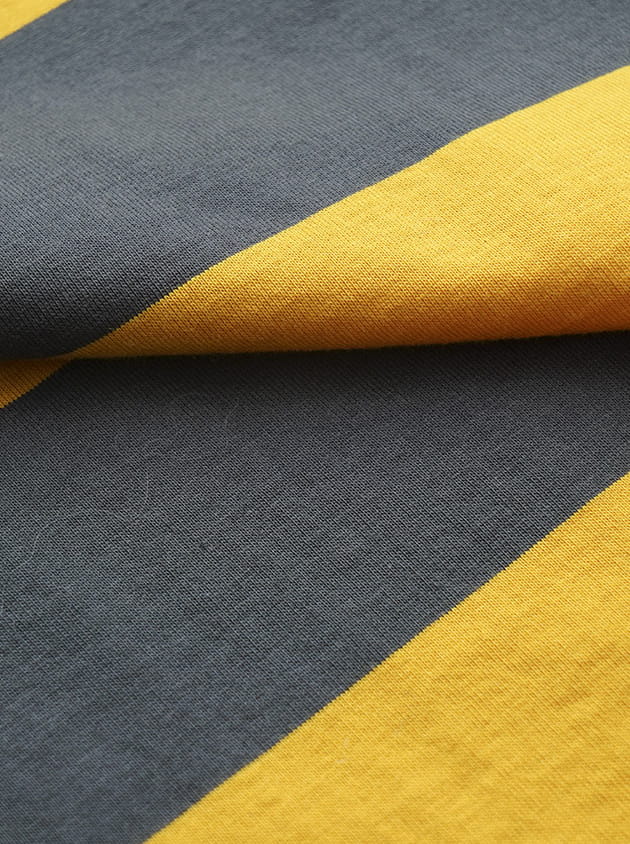Types of Sporting Fabric
Update:06 Jan
Whether you are looking for a new set of sportswear or simply want to make a statement about your fitness, there is a wide variety of fabrics available to choose from. Each type of fabric has its own benefits and characteristics. Selecting the right one for your sporting needs can make all the difference in performance and comfort.
For many sports, wearing clothing that is moisture wicking is critical. This fabric moves sweat away from your body to the outside, where it evaporates. Other types of sportswear fabrics include mesh, which is ideal for ventilation areas of a garment. These fabrics can be woven, knitted, or brushed. They are also made of varying materials, such as polyester and nylon. Some fabrics are also wind resistant.
The texture and smoothness of the fabric's surface also affects comfort characteristics. Knitted fabrics have fewer contact points with the skin, which reduces clinging sensations. Polyester is also wrinkle free, making it ideal for sportswear. It is also breathable, and can be combined with other materials to create a base layer.
Polyester is widely used as a sportswear fabric, and its insulating properties make it ideal for sports jackets. It is also mildew resistant, and wicks away sweat safely.
Nylon is also a popular sportswear fabric, and it is known for its stretchability and wicking properties. Nylon wicks away sweat from the body and keeps your body temperature controlled. Nylon also dries quickly. This is important in hot weather and when swimming.
Polyester is also a popular material for sportswear, and it has good stretchability. Typically, mesh fabrics are made up of 85 percent material and 15 percent holes. Mesh fabrics can vary in size, and have small, medium, or large holes. The material is also wind resistant, and can keep the wind outside.
Microfibre is another type of fabric that is commonly used in sportswear. This fabric is very breathable, and it also has a beautiful drape and is resistant to wind. It is also moisture resistant and is ideal for sportswear jackets and trench coats.
Another common material used for sportswear is spandex. This is known to breathe and stretch, but can also be hard to embroider. It is also cheap, which makes it a great option for sportswear. It also has antimicrobial properties, which help prevent skin infections.
Some materials are made specifically for sportswear, such as nylon, which wicks away sweat, and keeps the body temperature controlled. The antimicrobial treatment also helps to reduce microbial bacteria, which can cause infections.

For many sports, wearing clothing that is moisture wicking is critical. This fabric moves sweat away from your body to the outside, where it evaporates. Other types of sportswear fabrics include mesh, which is ideal for ventilation areas of a garment. These fabrics can be woven, knitted, or brushed. They are also made of varying materials, such as polyester and nylon. Some fabrics are also wind resistant.
The texture and smoothness of the fabric's surface also affects comfort characteristics. Knitted fabrics have fewer contact points with the skin, which reduces clinging sensations. Polyester is also wrinkle free, making it ideal for sportswear. It is also breathable, and can be combined with other materials to create a base layer.
Polyester is widely used as a sportswear fabric, and its insulating properties make it ideal for sports jackets. It is also mildew resistant, and wicks away sweat safely.
Nylon is also a popular sportswear fabric, and it is known for its stretchability and wicking properties. Nylon wicks away sweat from the body and keeps your body temperature controlled. Nylon also dries quickly. This is important in hot weather and when swimming.
Polyester is also a popular material for sportswear, and it has good stretchability. Typically, mesh fabrics are made up of 85 percent material and 15 percent holes. Mesh fabrics can vary in size, and have small, medium, or large holes. The material is also wind resistant, and can keep the wind outside.
Microfibre is another type of fabric that is commonly used in sportswear. This fabric is very breathable, and it also has a beautiful drape and is resistant to wind. It is also moisture resistant and is ideal for sportswear jackets and trench coats.
Another common material used for sportswear is spandex. This is known to breathe and stretch, but can also be hard to embroider. It is also cheap, which makes it a great option for sportswear. It also has antimicrobial properties, which help prevent skin infections.
Some materials are made specifically for sportswear, such as nylon, which wicks away sweat, and keeps the body temperature controlled. The antimicrobial treatment also helps to reduce microbial bacteria, which can cause infections.

Recommended Products
-

WBHB20004 100%Cotton Striped Polo Long Jerse Fabric
-

WBLW19001 2*2RIB Knit Fabric 96%Cotton
-

WBLW20001 53.3%Cotton 2*2 RIB Knit Fabric
-

WBMQ20014 French Terry (Organic Cotton)
-

solid Color Double Knit Fabric
-

WB17115 Light Blue Double Knit Fabric
-

WB17137 Light Green 97%Poly Ottoman knit fabric
-

WB18007-1 Double knitted fabric Stripe 95%Poly
-

WB18073 90%viscose Double Knit Fabric
-

WBWY20002 160CM Width Woven Striped Mesh cloth

 English
English 中文简体
中文简体
